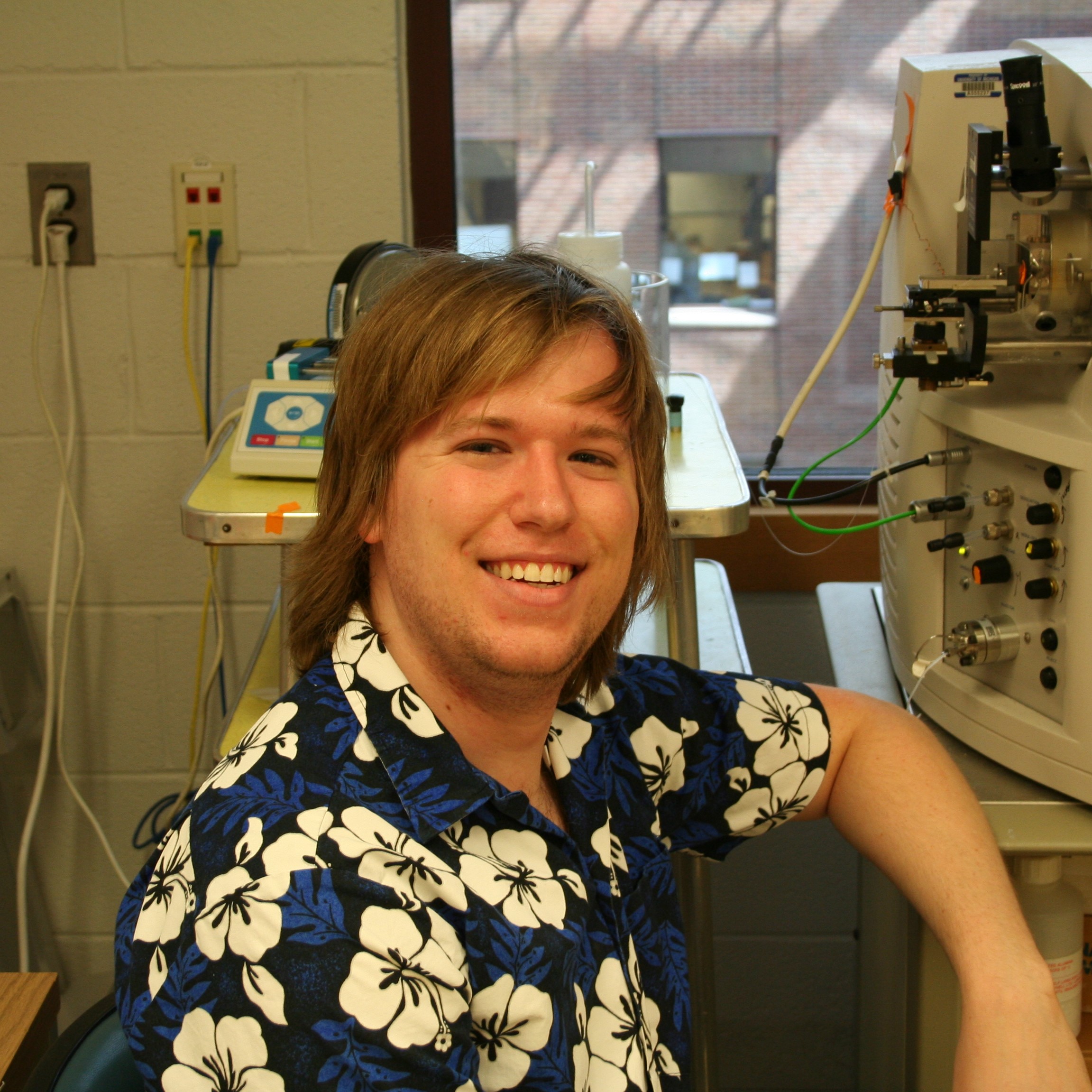Seminars 2017-2018
For the Winter 2019 semester, the seminars will be held on Mondays at 12:00 PM unless otherwise specified. Food will be served before the talks. Financial support for the seminars was kindly provided by the Rackham Graduate School.

|
April 23, 2019 Breaking the Diagnostic Barrier for Hemoglobin Diseases in Low and Middle Income Countries 12:00-1:00 | Johnson room, Lurie engineering centerProf. Umut GurkanCase Western Reserve University 7% of the world’s population live with an inherited hemoglobin disease. One of the most austere and well-
known hemoglobin diseases is sickle cell anemia that is caused by the recessively transmitted sickle
hemoglobin gene. Hemoglobin diseases have the highest prevalence in sub-Saharan Africa, in Central
India, and in Southeast Asia, mainly in low and middle income countries. In these regions, these diseases
go mostly undiagnosed, which leads to early mortality. For example, up to 90% of the babies born with
sickle cell anemia in sub-Saharan Africa die before age five due to lack of timely diagnosis. The World
Health Organization estimates that at least 70% of these deaths are preventable with simple, cost-effective
interventions, such as early point-of-care screening followed by widely available and affordable treatment
and care. To break the diagnostic barrier and to improve treatment of these diseases worldwide, we
develop new diagnostics. Our research primarily focuses on the fundamentals of red blood cell mechanics,
biofluid mechanics, microfluidics, and electrophoresis. We apply our basic understanding in these areas to
improve patients’ access to timely diagnosis and effective treatment. In this talk, I will provide an
overview of our translational research activities and field-tests of new diagnostics in the US, and
worldwide, including, Nigeria, India, and Thailand.
|

|
April 8, 2019 Microfluidic Devices using Continuous and Droplet Fluid Flow Techniques for the Bioanalytical Applications 12:00-1:00 | Dow 2166Dr. Vishal Sahore This work develops miniaturized fluidic/lab-on-a-chip systems, using a variety of novel microfluidic (continuous- and droplet-fluid flow) device tools for the bioanalytical applications, with specific focus on the low-cellular input epigenetic studies; pre-term birth diagnosis; and multiplex electrochemical-bioassay method development. Main emphasis of this research is to invent novel microfluidic means and miniaturize the conventional bench top analysis techniques to develop high-throughput, fast, low-cost, low-sample volume and portable lab-on-a-chip analytical systems that are suitable for a variety of bioanalytical applications including point of care diagnostics. Developing such systems require using various microfluidics (continuous- and droplet-fluid flow) techniques, including integrated device design, fabrication, and characterization on multiple material substrates; fluid automation, control and manipulation; sample preparation using electro-kinetic, porous polymer monoliths and magnetic bead based techniques; cellular and molecular sample processing using microchip solid phase extraction, electrophoresis, and dielectrophoresis; and analyte detection using electrochemical and fluorescence methods, which will be discussed herein. Initially, the development of droplet microfluidic tools in thermoplastics and fluorothermoplastics material systems will be presented. Subsequently, the ongoing development of a droplet microfluidics system integrating single cell capture, cell containing droplet sorting, and chromatin accessibility assay will be elaborated for the epigenetic analysis of the biological cells. Additionally, a brief information will be provided on the development of continuous-fluid flow based, multilayer hybrid devices with pneumatic pumps, valves and bio-separation modules (methacrylate based porous polymer monoliths and microchip electrophoresis) for the sample-to-answer pre-term birth biomarker analysis. Finally, the advancement of a new microfluidic pumping technique of redox- magnetohydrodynamics; its fundamental microfluidic feature of flat flow profile; and proof-of-concept application of the flat flow profile to the multiplex electrochemical-bioassay detection will be shared.
|

|
April 1, 2019 Microfluidics and Functional Genomics Related to Microbial Communities 12:00-1:00 | Dow 2166Prof. Syed HashshamMichigan State University Molecular tools related to specific functions of microbial communities are helpful in deciphering the presence and activity of harmful or beneficial microorganisms. Medium to high throughput microfluidic systems play a key role in the design and application of such tools. In this talk, I will highlight key attributes of selected microfluidic systems using examples related to microbial systems. Such examples will include harmful (e.g., antibiotic resistant bacteria, waterborne pathogens) as well as beneficial bacteria (e.g., organohalide respiring bacteria). Implications of various issues including sample matrix, target multiplexing, field deployability, reaction chamber volume, and need to recover amplified nucleic acids products for further analysis will be discussed.
|
|
|
March 11, 2019 Key Innovations in the Design and Development of a Microfluidic 'Random Access Memory' Platform 12:00-1:00 | Dow 2166Dr. Priyan Weerappuli Physicist Rolf Landauer famously noted ‘information is not a disembodied abstract entity; it is always tied to a physical representation’. Broadly, my work has been motivated by a broad vision wherein information, in the form of flow-suspended objects (FSOs) (e.g. individual droplets/emulsions, mammalian cells, microbeads, etc), may be handled and manipulated in a manner inspired by both the handling of bits by computational random-access memory and of inventory within a warehouse. This conceptual fluidic system would resemble a network of interconnected modular components designed to perform operations ranging from sample enrichment (through repeated cycles of ‘trapping’ and ‘release’) and monitoring/incubation (as may be desired for biological samples or compartmentalized chemical reactions), to Boolean operations (e.g. the merging or splitting of droplets). Such a system could then be utilized for performing complex single-unit operations (e.g. single cell genomics/proteomics) without requiring off-chip sample handling – a true lab on a chip.
This talk will focus upon three key innovations that have proven invaluable toward the development of this platform: (1) the design and characterization of a novel elastomeric valve that could be patterned at densities > 1,000 valves per device, (2) the utilization of this valve within a gas-on-gas multiplexer capable of providing the operational scalability of large-scale integration (LSI), (3) the optimization of a storage unit geometry that is both scalable and capable of efficiently capturing single FSOs, and (4) the integration of these components in the design of a system capable of selectively capturing and releasing single FSOs.
|

|
February 18, 2019 Whole-organism microfluidics for studying aging in vivo 12:00-1:00 | Pierpont Commons East RoomProf. Nikos Chronis In this talk, I will describe microfluidic devices that can manipulate whole micro-organisms (such as the worm C. elegans and the Drosophila fruitfly) and image in vivo their neuronal networks at the single neuron level. Particularly, I will discuss how microfluidics combined with functional (calcium) imaging can be a powerful tool for studying neuronal aging in C. elegans. Using such an approach, we were able – for the first time – to demonstrate that sensory functions in C. elegans degrade as the worms get older. These microfluidic devices can be further automated for use in high-throughput, in vivo screening applications to assess neurodegenerative processes in C. elegans in order to discover age-related molecular pathways or neuroprotective drugs.
|

|
February 11, 2019 Microfluidics Bring Single Molecules Into Focus: Tackling the Vast New Universe of Non-Coding RNAs 12:00-1:00 | Dow 2166Prof. Nils Walter Over two decades at the U-M, the Walter lab has addressed the overarching hypothesis that dynamic RNA structures are a major determinant of the regulation of gene expression, often in ways that have been overlooked by a field that historically was rooted in genetics. Encapsulating the power of our pursuit, we utilize microfluidic channels to visualize the ever-expanding universe of genetically encoded non-coding RNAs and their associated molecular nanomachines by single molecule fluorescence microscopy. As one example, we recently showed that transcriptional pausing at a site immediately downstream of a bacterial gene regulatory motif called a riboswitch requires a ligand-free pseudoknot in the growing RNA chain, a precisely spaced consensus pause sequence, and electrostatic and steric interactions with the exit channel of bacterial RNA polymerase. We posit that many more examples of such intimate structural and kinetic coupling between RNA folding and gene expression remain to be discovered, together leading to the exquisite regulatory gene control enabling all life forms. Complementarily, we are developing tools to observe single RNA nanomachines in action within their natural habitat, inside living cells. Finally, we have developed Single-Molecule Recognition through Equilibrium Poisson Sampling (SiMREPS) as a tool leveraging microfluidic miniaturization to count single RNA molecules as biomarkers of disease and have founded a biotech company around this new diagnostic detection paradigm.
|

|
January 28, 2019 A Fast and Reproducible ELISA Laser Platform for Ultrasensitive Protein Quantification 12:00-1:00 | FXB 1008Xiaotian Tan Optofluidic bio-lasers are currently of high interest for sensitive, intra-cavity, biochemical analysis. In comparison with conventional methods such as fluorescence and colorimetric detection, lasers provide us with a method for amplifying small concentration differences in the gain medium, thus achieving high sensitivity. Our previous research has demonstrated that sandwich IL-6 ELISA performed in capillary-based optofluidic laser cavity was able to achieve ultra-high detection sensitivity (LOD between 1-10 fg/mL) with small sample volume (~20 μL). However, such approach has several limitations such as low repeatability and long assay time (~8 hours in total, 7 hours for laser measurements). Here, we developed a novel on-chip ELISA laser platform by directly fabricating micro-wells on dielectric mirrors for immunosorbent reactions. Polystyrene microbeads of 30 mm in diameter were placed in the wells to optically enhance the resonance cavity during laser measurement, thus significantly improving reliability, shortening assay time (~1.5 hours, 30 minutes for laser measurements) while maintaining the attractive features such as small sample volume and very high sensitivity (LOD ~0.1 pg/mL for IL-6). This work pushes the ELISA laser one step closer to solving problems in real-world biochemical analysis.
|
|
|
December 11, 2018 Microfluidic devices to measure blood health 12:00-1:00 | Dow 1014Dr. Sarah Mena Blood’s rheological properties are indicators of several health conditions. For instance, high values of blood viscosity are correlated with cardiovascular and cerebrovascular diseases, while blood coagulation disorders lead to higher mortalities in patients suffering traumatic brain injury. In addition, red blood cells with lower deformability are present in sepsis, sickle cell disease, and malaria. Despite these relationships, assessment of blood’s rheological variables in clinical practice is uncommon due to difficulties in the current measuring techniques, which involve cumbersome procedures and require large amounts of a patient’s blood and expensive equipment. Faster diagnostics could provide information far ahead of symptomatic presentation and provide a means to develop and test new therapies. To make this new information accessible, we propose the use of simple and inexpensive microfluidic devices to measure blood flow properties.
Viscosity measurements of complex fluids have been generally accomplished using rheometers and capillary viscometers, which are reliable methods but are not suitable as point-of-care technologies. To provide an appropriate measuring technique for point-of-care applications, we have designed a microfluidic droplet-based viscometer where the length of the droplets created is inversely proportional to the viscosity of the sample. The device can operate at different shear rates and has been optimized for use with complex fluids, including blood. In addition, the device is capable of measuring the coagulation process in blood by continuously measuring viscosity. This allows the study of coagulation at different shear rates.
|

|
November 27, 2018 Development of the Droplet CAR-Wash Platform for Picoliter-Scale Epigenetic Analysis 12:00-1:00 | Dow 1014Steve Doonan Droplet microfluidic technologies provide exciting opportunities in (bio)chemical analysis. By compartmentalizing miniaturized samples in fluorinated oil, this approach enables highly efficient mass transport and minimizes sample loss in processing hundreds to thousands of unique picoliter-scale reaction volumes per second. Well-characterized microfluidic systems form droplets and add reagents to perform in-droplet chemistry across a range of applications in chemical analysis and materials synthesis. Nonetheless, selective sample purification and washing operations remain elusive. Even though this fundamental step provides the basis of many key biochemical techniques, such as solid phase extraction, enzyme-linked immunoassays, solid phase synthesis, etc., it has yet to be realized at scale in an effective droplet format. This presentation will focus on the development and characterization of a novel in-droplet purification approach which we term “CAR-Wash” and its integration with epigenetic analysis. We are validating device performance by targeting key DNA-organizing histone protein post-translational modifications and envision that this platform will enable automated, low sample input profiling of chromatin organization in a clinical context.
|

|
November 13, 2018 A transient microfluidic digital immunoassay enables near-realtime monitoring of post-cancer immunotherapy cytokine release syndrome 12:00-1:00 | Dow 2150Yujing Song Cytokine release syndrome (CRS) is a potentially life-threatening systemic inflammatory response frequently accompanying cancer immunotherapies. Despite the promise of recent immunotherapeutic strategies, delayed treatment of CRS resulting from the lack of a timely diagnostic method has dampened their efficacies. Here, we established a digital protein biomarker screening assay based on non-equilibrium single-molecule-level cytokine detection across millions of femtoliter-sized sample partitions. Our study shows that the assay enables quantification of interleukin 6 (IL-6), a central mediator in CRS, with an incubation time as short as 30s, a limit of detection (LOD) of ~ 10pg/mL, and a 4-order of magnitude dynamic range. By further extending this assay, we performed rapid, multiplex, near-bedside measurements of circulating cytokines for three acute lymphoblastic leukemia patients receiving chimeric antigen receptor (CAR)-T cell therapy. The demonstrated transient digital immunoassay has the potential to pave the way for timely, personalized management and intervention of CRS toxicity based on real-time cytokine expression profiles.
|

|
October 30, 2018 Ionophore-based ion sensing on droplet microfluidics and paper-based microfluidics 12:00-1:00 | Dow 1014Dr. Xuewei Wang Detection of various ionic species are important for environmental monitoring, medical diagnostics, and ion channel studies. We designed paper-based sensors and microfluidics devices for low-cost and user-friendly detection of cations (e.g., sodium and potassium), anions (e.g., chloride and fluoride), and polyions (e.g., protamine and heparin). We are also developing inkjet-printed sensors on clothing for real-time colorimetric monitoring of sweat electrolytes. In another project, we dope appropriate hydrophobic sensing chemicals including dyes into the oil phase of segmented microfluidics, which makes the oil segment responsive to specific ions in its adjacent aqueous segments. This ion sensing platform provides a new opportunity for study of ion channels at the single cell level.
|

|
October 16, 2018 Microdroplet-enabled co-cultivation and metagenomic investigation of microbiomes 12:00-1:00 | Dow 1014James Tan While microbial communities are critical to systems of various length scales, ranging from the human body to natural ecosystems, interspecies microbial interactions that play a key role in driving spatiotemporal dynamics typically occur over the micron-scale. Typical microbial surveys study samples of much larger length-scales, resulting in an averaging of ecological signal across relevant ecological units. Alternatively, microfluidic droplets provide isolated micron-scale environments for the high-resolution study of these relevant ecological sub-communities. In our work, we combine co-cultivation of microbial sub-communities in these microfluidic droplets with metagenomic sequencing to reveal the genomic capability of sub-communities from the human gut. With this approach, we propose to apply additional 'omics approaches, such as transcriptomics, to further elucidate the metabolic interactions and mechanisms in various biological systems.
|

|
October 2, 2018 Micro-playgrounds for motile bacteria 12:00-1:00 | Dow 1014Prof. Yann DufourMichigan State University Flagellar motility is widespread in bacterial species living in diverse environments and plays an important role during complex processes such as plant root colonization, host infection, or collective migration. Even though the fundamental mechanisms of motility and chemotaxis are well characterized, especially in Escherichia coli, the specific adaptations of different bacterial species to their respective ecological niches has been difficult to investigate in controlled laboratory conditions. Natural environments are dynamic and often have a complex physical structure. I will discuss how microfluidics and single-cell tracking allowed for the identification of a fundamental tradeoff in the chemotactic performance of E. coli when faced with chemical gradients of different length-scales. Then, I will discuss our current efforts to characterize the behavior of human gut pathogens in intestinal mucus.
|

|
September 18, 2018 Nanoelectrospray Ionization-Mass Spectrometry Analysis of Microfluidic Droplets 12:00-1:00 | Dow 1014Daniel Steyer Mass spectrometry has presented itself as a valuable analytical tool in microfluidic studies; however, its implementation into droplet-based microfluidics has been extremely limited. In our work, we are attempting to show that nanoelectrospray ionization-mass spectrometry (nESI-MS) can reliably analyze the small molecule content of droplet samples. A system for the nESI-MS analysis of droplets has been developed which has the capacity to analyze large numbers of droplets in one run (>10,000 demonstrated) with stable signal. Applications to in vivo neurochemical monitoring, biocatalysis, and organic synthesis are being explored.
|
